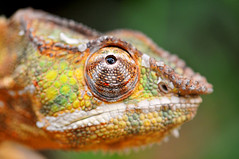Our brains have evolved a lot since we were monkeys, but one thing has hardly changed: the lizard brain.

A term popularised by Seth Godin in his brilliant book Linchpin, this part of our brain still remembers what it was like to need to survive, to blend in, to not make a fuss. In fact, the worst thing for the lizard brain to think would be that whatever we’re doing makes us stand out.
Standing out from the crowd in evolutionary terms meant you’d get picked off by a predator and this is exactly how the lizard brain still thinks!
Steven Pressfield’s book The War of Art is a revealing and personal account of his battles as a writer against what he calls ‘the resistance’. The resistance is a mindset, usually developed by the lizard brain, but characterised by stress, anxiety, fear of failure, fear of success and a whole host of other emotions that whir around our brains and tell us to stand still.
“Stop. Don’t do it. It’s risky. Do it how others do it because that’s what we know is already accepted behaviour. Innovation and unorthodoxy is a crazy idea. Creativity is just wrong.”
Your job as a Ninja is to silence those thought processes as much as possible.
This sounds easy but it’s not – mainly because they’re often so quiet that you don’t even realise they need silencing at all. Pay close attention to yourself and your gut instincts, but also objectively observe your productivity, noticing which tasks you’re drawn to and repelled by. You don’t need to be a psychologist or a counsellor to understand your own thinking, but you do need to pay close attention to it.
Like this? Try these
Quieting the Lizard Brain (sethgodin.typepad.com)
The doormat, the jerk and the lizard brain (sethgodin.typepad.com)
Built for Adversity (https://www.stevenpressfield.com)

